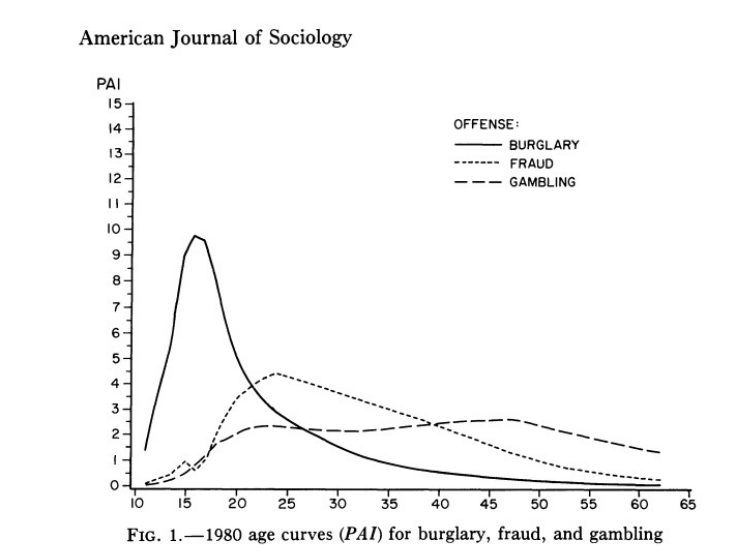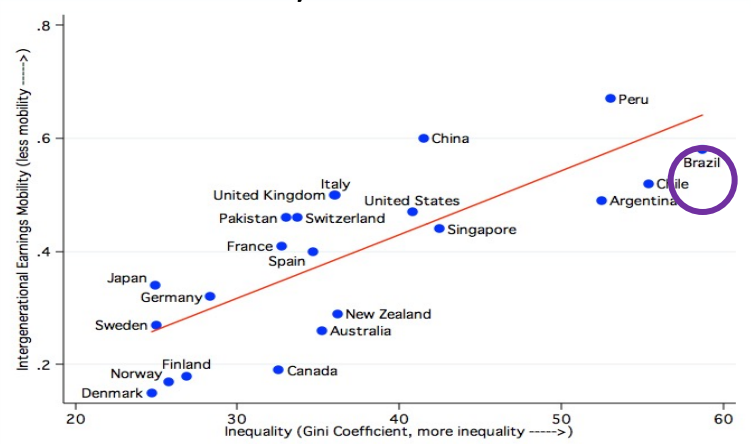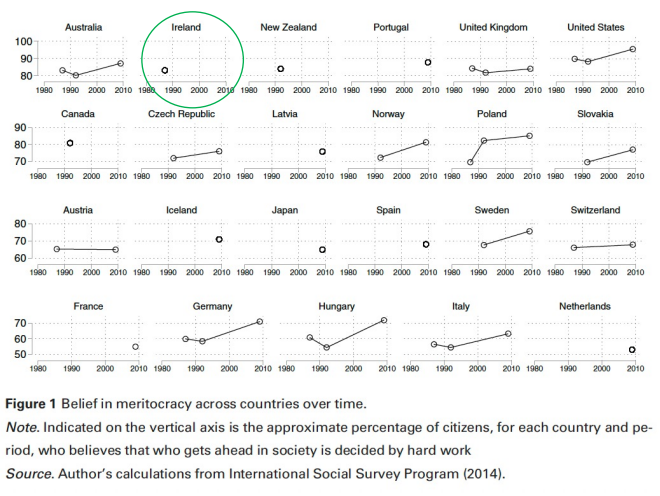Revision fr
Levels of Sociological Analysis
Micro-level is person-level, individual interactions, ‘self’ representations of Individuals, conversations, e.g., changes in parent-child relationships
Meso-level is above the individual, groups, ‘embeddedness’ contexts Organisations, Universities, e.g., changes in occupational licensing
Macro-level looks at large-scale social context that influences social systems of countries and welfare states, e.g. changes in national school laws and participation
Larger macro-level and meso-level structures shape micro-level social structures, e.g., a person’s social and economic position occupation, will affect their individual beliefs and behaviours, e.g., their parental behaviours.
Social Psychology
Social psychologists focus on understanding and explaining how individuals perceive, think about, behave, and influence one another in social settings.
Focus on attitudes, persuasion, social influence, individual perception, and intergroup relations.
Tend to draw on psychology theories and ignore the larger social structures.
Sociological social psychologists focus on ways social structures and cultural norms shape individual attitudes, behaviours, and identities through social institutions.
For example, occupations, education, ethnicity, gender, race, age, and family bonds.
The Subjectification of Social Structure
Subjectification of Social Structure refers to how people's behaviours, perceptions, identity and cultural norms are shaped by social structure.
Social structures are important for personality, values, self-concept, social orientations, and cognitive functions, as social structure affects these conditions in life.
Important factors of social stratification because of social structures: job conditions, income, where and how one lives.
Structure + Cognition Function
Kohn (1963) says people from different social classes see the world differently because of their life situations, which affect their values and goals.
Kohn believes it is wrong for psychologists to psychologise social structure or analyse an individual cognitive function sociologically.
Kohn suggests examining how large social structures affect the immediate conditions of people’s lives and how these conditions affect individuals’ values and orientations.
Job Conditions
In Kohn’s research, job conditions are an important intervening link between social stratification and an individual’s cognitive functioning.
Social stratification of job conditions is necessary as it is embedded in larger social and economic structures.
Conditions experienced by different classes contribute to values and behaviour.
Occupational differences determine a lot about people’s life conditions.
Occupations offer differences in:
Security
Stability of income
Social status
Middle-class occupations involve the manipulation of ideas and symbols.
Working-class occupations involve the manipulation of things.
Parent-child Relationships
People of different social classes come to interpret the world differently through different conditions, conceptions of reality, aspirations, and fears.
Social class position impacts parental values, and values affect behaviour.
These differences come from the different conditions of life in different social classes.
Parental values will affect a child’s upbringing in different ways.
This is an example of what forms a bridge between social structure and behaviour.
Social Class
Social classes are groups of people with similar positions in the scale of prestige.
Lower class of unskilled manual workers
Working class of manual workers in semiskilled and skilled occupations
Middle-class white-collar workers and professionals
Elite class is differentiated by wealth and lineage.
Sociology of Education
Knowledge economy involves creating and offering goods and services that rely on knowledge-heavy activities.
Intellectual capacities become increasingly important.
Massification of education is the expansion of tertiary-level education.
Example: Ireland.
Over 50% of the population aged 25-65 have completed or partially completed tertiary-level education.
Inequality in Education
Intersectional inequalities are shown in third-level education.
Raey and colleagues’ (2001) qualitative data illustrates both class and ethnic inequalities.
Getting a Job after Education
Collins’ theory of Credential Society states that credentials are a means to justify and monopolise control in a highly stratified society.
Thus, power and status determine jobs.
The elite go to prestigious schools to get the top jobs.
Screening theory claims education only signals potential productivity on the job and does not build workers’ skills.
Employers ‘screen’ candidates for productivity.
Jobseekers will use their educational qualifications to ‘signal’ their productivity, skills, or capacity to do a job.
Crime + Deviance
Social Control Theory (Hirschi) was developed to explain the factors influencing individuals’ engagement in delinquent behaviour.
Focuses on the socialization process and individuals' social bonds with conventional society.
Delinquency occurs when one’s bond to society is damaged or broken.
Weak societal bonds increase the likelihood of delinquency.
Research has shown attachment to parents, friends, and school is a key factor in reducing delinquency.
Factors of Crime Likelihood
Attachment to others through social bonds such as parents, friends and school.
Attachment to parents is a strong social bond that is likely to reduce delinquency when there is more involvement and supervision.
Hirschi found that young boys who are attached to their parents and higher achievement rates are more likely to be attached to their peers.
Theory says belonging to a delinquent group is a result rather than a cause of delinquency.
Boys with stronger social bonds are less likely to have delinquent peers regardless of how delinquent friends are.
Beliefs in the moral validity of societal norms.
Boys with stronger social bonds are likelier to support the law and have low delinquency.
Involvement in conventional activities such as sports and hobbies, not supported by research.
Commitment to education/long-term goals.
Attachment to school reduced the likelihood of delinquency.
Higher aspirations and higher education are connected to lower delinquency.
Those who achieve more academically like school better and respect authority more.
Social Strain Theory
Merton's social strain theory explores the link between social structure and anomie, emphasizing the importance of a balanced distribution of effect in maintaining a stable social structure.
Lack of coordination between cultural and institutional means and goals can lead to anomie, resulting in cultural chaos and decreased predictability in society
Deviant behaviour arises from a lack of opportunity and societal emphasis on certain symbols of success that are not equally accessible to all, leading to frustration and antisocial behaviour.
Social Learning Theory
Social learning theory (Akers) emphasizes the role of differential association, definitions, reinforcement, and imitation in influencing behaviour.
People learn through their social interactions.
Social behaviour is received through conditioning and modelling others' behaviour.
Behaviour is strengthened through reward and loss of reward, such as negative punishment.
Differential association theory focuses on interaction with different groups that provide exposure to definitions, models, and social reinforcement, ultimately shaping behaviour through a balance of reinforcement and punishment contingencies.
Importance of social interactions, learned definitions, and reinforcement mechanisms in understanding deviant behaviour, such as substance use among adolescents.
For instance, substance use is differently enforced, with more rewards and less punishment, and there are more positive than negative definitions.
Broken Window Theory
Theory suggests that areas where people see evidence of disorder and neglect are areas in which people consequently experience or perpetrate crime.
More houses with broken windows, more houses with break-ins.
In more affluent neighbourhoods, social order stops a neighbourhood from descending into chaos and crime.
Crime + Age
Young versus old patterns reflect age-related differences in motivation and opportunity for different types of crime.
Crime peaks from ages ten to early twenties and then decreases drastically.
Hirschi believed the crime age curve follows a predictable pattern across different societies and historical periods.

Social Class and Social Status
Bourdieu views social class as multidimensional, encompassing economic, cultural, and social aspects.
Chan and Goldthorpe view class as structured by economic life, with occupations playing a key role in determining status.
Social class and status are interconnected in contemporary society, influencing individuals' life chances, employment opportunities, educational attainment, and social outcomes.
Access to Resources
Social Status and Prestige
Political Power and Influence
Structural Inequality
Friedman and Laurison introduce the class ceiling effect, a barrier limiting career progression for workers from working-class backgrounds.
Elite professions are predominantly occupied by individuals from privileged backgrounds.
Karl Marx on Class
Social class revolves around the concept of the mode of production.
Particularly, the relationship between the bourgeoisie and the proletariat.
Marx's concept believed the Bourgeoisie exploited the Proletariat to maintain their wealth and power.
According to Marx, class struggle is the driving force behind historical change, and capitalism would eventually collapse due to internal contradictions, leading to the establishment of a classless society.
Pierre Bourdieu's Concept of Class
Cultural capital refers to people's non-financial social assets, such as education, cultural knowledge, symbols and linguistic skills.
Bourdieu argued that social inequality is not solely determined by economic factors but is also shaped by cultural and symbolic domination within social spaces.
Cultural Capital
Social Reproduction
Social capital
Cultural Symbols
Habitus
Bourdieu believed classes are created through social reinforcement using schema, cultural norms, and values.
Those with shared schema belong theoretically to the same class.
Classes are historically constructed.
For example, working-class people, which leads back to Karl Marx.
Symbols help create social classes through actions taken to establish them.
Bourdieu believed in two types of capital:
Social capital which comes from connections and group memberships
Symbolic capital is how these resources are seen as valuable.
People are placed in a social space based on how much capital they have, their composition of cultural and symbolic capital and their trajectory within their social space of capital.
For Bourdieu, the construction of social space offered the best explanation of differentiation into the division of classes.
Social Stratification
Prestige is a subjective hierarchical rating of status.
Occupational prestige conveys the social standing associated with a given job based on subjective social worth and respect evaluations.
The Treiman constant suggests that these occupational prestige rankings are constant across countries and over time.
Social stratification is when different groups are ranked inferior and superior to each other on a scale of social worth.
Society is stratified by social class & social status.
Weber's idea of 'life chances' highlights how social strata impact life chances, influencing individuals' positions and experiences.
Socio-economic status (SES) is based on a person’s education, occupation, income or wealth.
Social class in stratification
Marxism focuses on relations of production and cohesive classes.
Weberian emphasises market capacities and 'propertied classes.
Durkheim's view on the division of labour and occupational differentiation.
Social Mobility
Social mobility is the change in a person’s socio-economic situation by their parents or throughout their lifetime.
Intergenerational mobility involves upward and downward movement over generations.
Intragenerational mobility involves upward and downward movement over the life course.
Structural mobility refers to the changes in the size of social classes over time, either expanding or contracting.
Social mobility is measured by the EGP (Erikson, Goldthorpe, Portocarero) class scheme. Collapsed to 7, it includes
Service (I+II)
Routine non-manual workers (III)
Petit bourgeoisie (IVa+b)
Farmers (IVc)
Skilled manual workers (V+VI)
Semi-and-unskilled manual workers (VIIa)
Agricultural workers (VIIb)
Stratification research and class mobility
Social fluidity is the ability to move up or down the income or status scale.
Relative mobility refers to the opportunities to get to a particular class depending on their class origin.
Past literature on social mobility needs updating.
Social mobility and social class analysis are frequently based only on understanding father-son differences, e.g., class origin and class destination.
Research shows that those with greater wealth, more income, and higher social classes tend to live longer and healthier lives than those with less wealth, less income, and lower social classes.
The Great Gatsby Curve depicts higher inequality and lower intergenerational mobility.

Social reproduction
Social reproduction refers to the process through which social structures and inequalities are passed down from generation to generation, maintaining the existing class divisions in society.
It involves the transmission of economic, cultural, social, and symbolic capital from parents to children, contributing to the perpetuation of social stratification.
Social reproduction plays a crucial role in shaping opportunities, life chances, and outcomes
based on one’s socioeconomic status, ultimately influencing the overall stability and
continuity of class structures within a society.
People tend to believe that hard work is what brings one success.
Meritocracy implies success is all down to talent, IQ and hard work.
